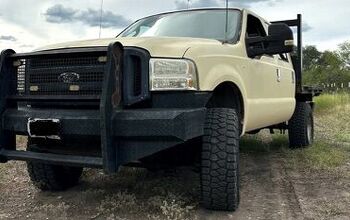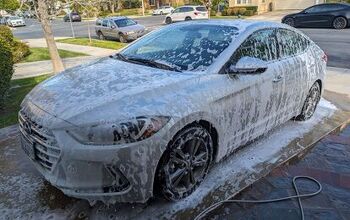How to Buy a Used Car
Taking your time and researching can reap big rewards when it comes to purchasing pre-owned vehicles.
To some, the very notion of purchasing a used car can send them running for the hills, but as with anything else, provided you do your homework, the vehicle you choose can save you thousands of dollars over that new one in the showroom, without proving to be a money pit.
BEGINNING THE SEARCH
Depending on the age and type of vehicle you’re looking for, you might be presented with just a handful of examples (if it’s a special interest or classic), or up to literally thousands if it’s a late-model used car or truck.
Regardless of which machine you’ve got in mind, it pays to follow the same principles when you begin your quest.
First, research the car you’re looking for in terms of features, options and price. If you can, read owner surveys about this particular model and make note of any problems that seem to surface. Also remember to stick to a budget, but be realistic. You’re not going to find a nice Ferrari for 10 grand but still, provided you take your time, you might be surprised at what comes along.
In terms of figuring out what to pay, arm yourself with what similar cars go for. Often a good way to do this is via the Manheim Market Report. It’s not generally available to consumers, but if you’re planning to take out a loan to fund the purchase anyway, your local bank and credit union can often help by printing out part of the report, which lists wholesale transactions for cars similar to the one you’re considering (it’s a better route than Kelley Blue Book or NADA price guides).
When you’ve found a car you like, be sure to get the Vehicle Identification Number (VIN). In most cases if you’re courteous and come across as a serious buyer, the vendor will be happy to oblige. If they aren’t, then they’re probably hiding something, so consider looking elsewhere.
Once you’re armed with the VIN, run it through a vehicle history site like Carfax or Autocheck. These sites normally charge a small fee, but by using them you’ll likely detect whether the vehicle was involved in an accident, stolen, rebuilt or has any other issues. In general, performance cars are most likely to be thrashed, crashed or stolen compared to regular cars, so make sure you check thoroughly if you’re looking at performance car.
While these sites provide a lot of information, you should also research the vehicle’s individual history. For example, was it subjected to scheduled and regular maintenance? Are there any liens against it? Were there any technical service bulletins or recalls issued for it? The original dealership where the car was sold (usually listed on the Carfax report) can often help, and although they can’t actually print out a maintenance schedule they can tell you verbally. In some cases, (though it’s far more common in Europe) you might get a full service history with the vehicle, including stamps for all maintenance in the owner’s logbook along with receipts for repairs. Finding this means the owner is likely meticulous and the vehicle is probably a good buy.
TEST DRIVE
Next you need to figure out exactly what the vehicle is like, so schedule an appointment to examine it and take a test drive. Make sure you do it during daylight hours (night can hide a multitude of sins) and that you have plenty of time set aside.
You should first examine the condition of the body. Check for signs of accident repairs, misaligned panels, signs of poorly matched colors, orange peel, runs in the paint and overspray around trim. If you find any of those, then chances are the vehicle has been in an accident and poorly repaired. If you live in a northern climate also make sure you check for signs of rust. Bubbles around the wheel lips, the bottom of the doors or windows can often hint at much further damage beneath.
You should also ask the seller to jack the car up or drive it on ramps so you can see underneath. Rust can cause structural issues, so if you find holes in the bulkhead, floor pan, or around the suspension mounts or exhaust components, the car might be a rolling safety hazard. Checking underneath is also a good idea when looking for accident damage which could be concealed from above, look for bent frame rails or joints in the floor pan, which could mean the car is actually two different vehicles welded together.
Next, check the tires for wear, especially in the front. You can do this by cranking the steering wheel from side to side. If you find uneven wear marks, at the very least the vehicle will need an alignment, at worst it could mean it was in a major accident and poorly repaired.
Pop the hood and examine the engine. If the car is parked on a lot or driveway and the engine is warm, ask the seller why. Sometimes a ‘hot’ motor might be hiding a potential cold start issue like a flat battery, clogged fuel system or excessive valve knock. Check the condition of the belts and hoses thoroughly; any swollen hoses or cracked belts will need to be replaced.
Examine the fluids. The engine oil should be almost clear or light brown in color, if it’s black then it hasn’t been changed for some time and it’s best to move on. If it’s milky then it’s been contaminated by antifreeze, which often means major engine problems.
Check the anti-freeze level to make sure it isn’t too low – sometimes that can mean a cracked engine block or blown gasket. Pop off the oil cap on the cam or rocker cover of the engine and examine the inside, if there’s a slushy type residue, it can often mean a blown head gasket and unless you’re doing it yourself, major costs in terms of repairs.
If the car has an automatic transmission check the fluid, it should be red in color. Brown means it’s old and the trans has probably been neglected. Any signs of metallic shavings on the trans fluid dipstick will indicate excessive wear inside the transmission and likely major repairs.
Open and close the doors, hood and trunklid. If they don’t seem to close easily, then chances are the vehicle has been repaired. Look for signs of dampness in the trunk and interior, particularly on the floors, which can mean water leaks and potential rust problems, often caused by poor accident repairs. If the car has a sunroof, leaves can sometimes get blocked in the drain channels, causing water to seep in elsewhere.
Dirty interiors with stained and, or ripped seats, plus carpets covered in garbage can often be an eyesore, though in many cases aren’t always as bad as they first look. On late-model cars most interior pieces such as upholstery and door panels can be easily replaced, on older vehicles and classics that’s not always the case, so bear this in mind.
Take your place in the driver’s seat. If the cushion feels like it’s sagging but the mileage on the odometer doesn’t bear this out, chances are the car has been clocked. If that’s the case, walk away.
Start the engine and listen to it run. It should be smooth and quiet at idle. If there’s anything beyond a slight lifter noise at start up when cold, such as a knock, chances are it’s in need of a rebuild. Look for signs of smoke on start up, black smoke means a rich condition, which can eventually damage the cylinders, blue means worn valve guides (often a result of high mileage combined with a lack of regular oil changes), white smoke means coolant issues.
If everything looks good at this point, it’s time to hit the road. Try and find a variety of road conditions, city street; open road and boulevard or highway. If the engine feels sluggish under acceleration or stumbles, then there’s likely to be an electrical or fuel system problem, though it could be due to a lack of regular servicing and tune ups. See how the transmission operates, on a manual car make sure the clutch is nice and tight and you can change gears without grinding. A burning smell and hard shifting usually spells a worn clutch. On automatics, the transmission should shift smoothly between gears, if it’s slipping or doesn’t want to go into gear, then it needs attention.
Check the steering; it should be fairly direct. If the car wants to pull to one side then it will need an alignment, which could hint at possible front-end accident damage. Excessive play can mean worn tie-rod ends or a steering linkage, if that’s the case it needs to be fixed before the car can be driven which can cost hundreds of dollars.
In terms of ride, if the vehicle seems to pitch and wallow over bumps, then the struts and shocks are worn and will need replacing. On most modern cars, this is a fairly labor intensive process and can get expensive, especially if a shop does the work.
The brakes should feel reasonably progressive, if the pedal is stiff or spongy, there might be leaks in the system or problems with the master cylinder. If the car pulls to one side under braking, a sticking caliper is often the culprit. If the vendor has neglected the brake system on the vehicle you have to wonder what else is wrong with it and its probably best to move on.
TAKE IT TO A MECHANIC
If up to this point, you’re satisfied with everything, then it’s time to take your potential purchase to your mechanic. As a rule of thumb, certified mechanics that run their own independent repair shops are often the best source. If you don’t know a good one, ask your friends or family. Word of mouth is often the best way good mechanics advertise their services. Once you have and the seller has let you take the vehicle to the shop, then treat the mechanic with respect and let them do the job.
Most will charge a set fee and provide a report upon completion. If everything appears to be in good order, perhaps with only regular servicing required, it’s time to make an offer.
TIME TO NEGOTIATE
That said; there’s always a bit of room for negotiation. If the vehicle is one you really want and in need of repairs other than regular maintenance, factor that into your offer price. In addition, if you’ve traveled a long way and the vehicle isn’t licensed or insured for the road but you still want it, factor in the cost of transporting it home.
In some cases if the seller thinks the price for repairs is too high, ask them if they know a mechanic who can perform the work for less, sometimes it can work out better for both parties, it’s not uncommon for the buyer and seller to split repair costs. In some cases the buyer can get a better deal on service and warranty from the seller’s mechanic.
If the seller refuses to budge on the original asking price, walk away. Remember there will always be another day and another car to look at.
More by Huw Evans


































Comments
Join the conversation
When you have decided to buy a used car from a car dealer then you have chosen the right method as it will save your money and before giving the money to the dealer you should bargain on the car price so that you can get your car with the right deal. If you know the market price of the car then only you can negotiate the price so do a market research for the car that you are going to purchase and always take a test drive of the car.